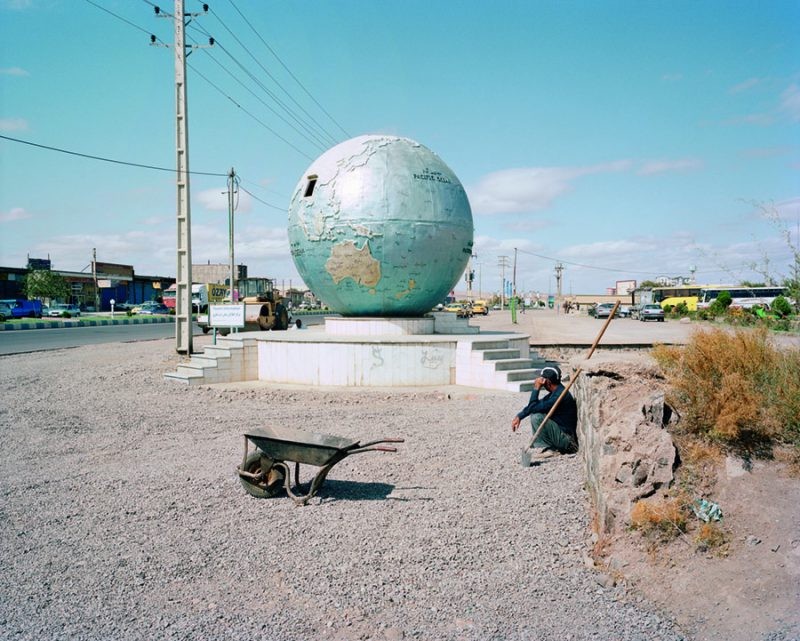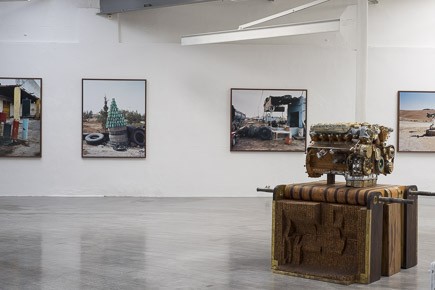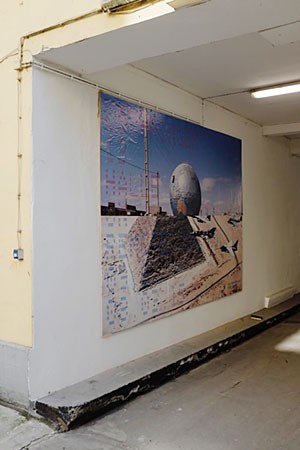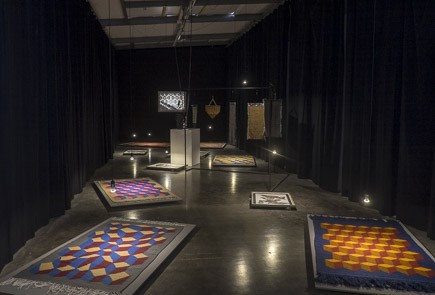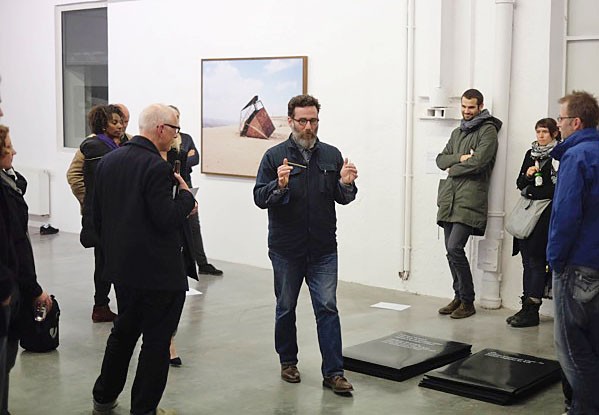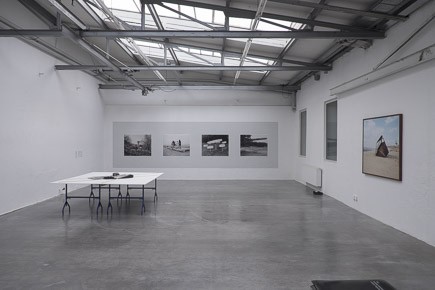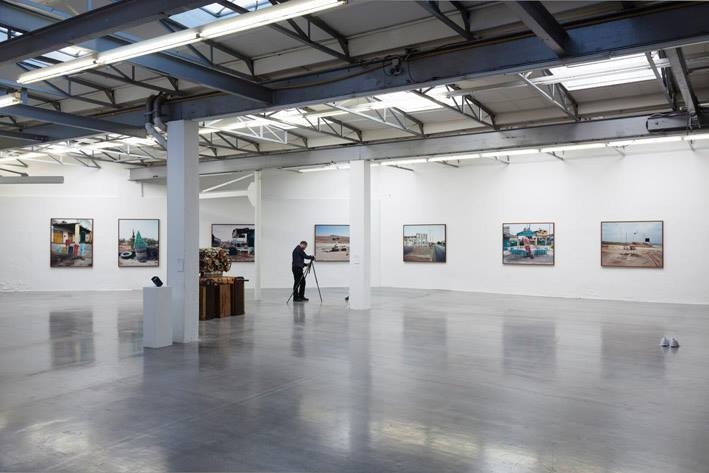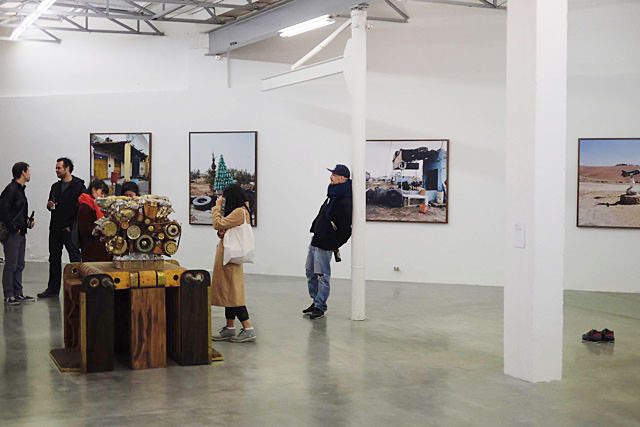On Remote Control 2
20 Mar - 14 Jun 2015
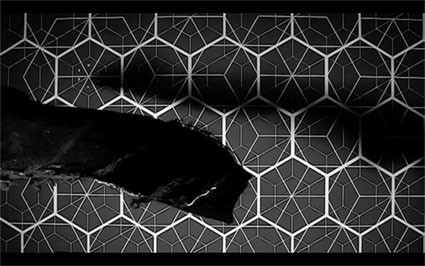
The 16mm Film-Loop by Luis Berrios-Negron is generously supported by the Zurich University of the Arts/Transdisciplinary Studies. Thanks!
ON REMOTE CONTROL 2
20 March – 14 June 2015
Luis Berríos-Negrón
Thomas Galler
Oliver Hartung
Eric van Hove
Philipp Messner
Andreas Neumeister
Nira Pereg
Sharon Ya’ari
Elucidating the diversity of the topic, and foregrounding new aspects, positions and regions, part two of On Remote Control is again devoted to the Arab world, with a new set of eight artists. While the first stage focused on military and social issues, the second is dedicated to civil, cultural and scientific influences across the Western and Arabian informed world. In times of proceeding globalisation, foreign lifestyles not only come closer, but converge seamlessly into another context. The subtle transitions between different cultures lead, all too often, to a sceptical view into the distance, trusting common readings and interpretive models. The show is based on the theory and practise of certain ideas, that will be reconsidered in the presented works.
Both Luis Berríos-Negrón and Eric van Hove link folklore to high-tech, thus taking loaded topics from their interpretation into the naive. The West’s monopoly on scientific progress, and simultaneously its power of definition of technology and research, become reversed into mutual exertion of influence and stimulation. Diverging notions of merit and value, different perceptions of exclusivity and handcraft, and a Western claim on sobriety undergo new perspectives. Berríos-Negrón poses the central question: how much we need to see in order to believe it. A question, which not only is relevant to science, but moreover symptomatic in regard to a conflict between the unknown and the familiar. Nira Pereg attends to the answer on two different levels. On the one hand, she demonstrates in her video work a coexistence of two religions, whose realisation seemed barely imaginable based on the current media coverage. On the other hand, Pereg stresses religion’s commonality to visualise belief with decor and furnishing in order to make it perceptible. In their photographic works, Sharon Ya’ari and Oliver Hartung formulate the contrast of holding onto memories and the concurrent urge for persistence and progress. Between fatalism and confidence, which become manifest in the medium of photography as well as in the shown motifs, both artists explore the possibility to create images of reality, which go beyond the politics of the day and at the same time imply their failure. The awareness of a continuous change becomes tangible and something timeless of “too late” or “not yet” determines the timing of the works.
The media and its predominance on meaning and the wide influence of this circumstance are the focus of artists Andreas Neumeister and Philipp Messner. Neumeister, having already pointed out the domination of daily media coverage in text and image in the first part, deepens his examination of the subject and emphasises the momentous appropriation of certain patterns in the news. The constructions of Philipp Messner expand Neumeister’s approach into the three-dimensional space. With his models and their formal execution, Messner highlights the objectification of certain events, exposing structures and connections which stay ignored because of a monotonous repetition. The seductive power of simplification of contexts and the need to hold on to available facts get refused in the interaction of the works from different positions. In this context, Zurich-based artist Thomas Galler reappears a second time and combines the demonstration of visual patterns with an area of conflict between different values of industrial goods, as already noted by van Hove.
On Remote Control 2 centres on ideas which elude an actual experience, but show two oppositional implications: Mistrust of the unknown, which can be followed only vaguely and therefore entails other sources; and antagonism to respecting conceptions we cannot experience, therefore requesting a high level of leeway. With detailed muse, subtle and intertwined narratives, the displays frame a space for these examinations.
20 March – 14 June 2015
Luis Berríos-Negrón
Thomas Galler
Oliver Hartung
Eric van Hove
Philipp Messner
Andreas Neumeister
Nira Pereg
Sharon Ya’ari
Elucidating the diversity of the topic, and foregrounding new aspects, positions and regions, part two of On Remote Control is again devoted to the Arab world, with a new set of eight artists. While the first stage focused on military and social issues, the second is dedicated to civil, cultural and scientific influences across the Western and Arabian informed world. In times of proceeding globalisation, foreign lifestyles not only come closer, but converge seamlessly into another context. The subtle transitions between different cultures lead, all too often, to a sceptical view into the distance, trusting common readings and interpretive models. The show is based on the theory and practise of certain ideas, that will be reconsidered in the presented works.
Both Luis Berríos-Negrón and Eric van Hove link folklore to high-tech, thus taking loaded topics from their interpretation into the naive. The West’s monopoly on scientific progress, and simultaneously its power of definition of technology and research, become reversed into mutual exertion of influence and stimulation. Diverging notions of merit and value, different perceptions of exclusivity and handcraft, and a Western claim on sobriety undergo new perspectives. Berríos-Negrón poses the central question: how much we need to see in order to believe it. A question, which not only is relevant to science, but moreover symptomatic in regard to a conflict between the unknown and the familiar. Nira Pereg attends to the answer on two different levels. On the one hand, she demonstrates in her video work a coexistence of two religions, whose realisation seemed barely imaginable based on the current media coverage. On the other hand, Pereg stresses religion’s commonality to visualise belief with decor and furnishing in order to make it perceptible. In their photographic works, Sharon Ya’ari and Oliver Hartung formulate the contrast of holding onto memories and the concurrent urge for persistence and progress. Between fatalism and confidence, which become manifest in the medium of photography as well as in the shown motifs, both artists explore the possibility to create images of reality, which go beyond the politics of the day and at the same time imply their failure. The awareness of a continuous change becomes tangible and something timeless of “too late” or “not yet” determines the timing of the works.
The media and its predominance on meaning and the wide influence of this circumstance are the focus of artists Andreas Neumeister and Philipp Messner. Neumeister, having already pointed out the domination of daily media coverage in text and image in the first part, deepens his examination of the subject and emphasises the momentous appropriation of certain patterns in the news. The constructions of Philipp Messner expand Neumeister’s approach into the three-dimensional space. With his models and their formal execution, Messner highlights the objectification of certain events, exposing structures and connections which stay ignored because of a monotonous repetition. The seductive power of simplification of contexts and the need to hold on to available facts get refused in the interaction of the works from different positions. In this context, Zurich-based artist Thomas Galler reappears a second time and combines the demonstration of visual patterns with an area of conflict between different values of industrial goods, as already noted by van Hove.
On Remote Control 2 centres on ideas which elude an actual experience, but show two oppositional implications: Mistrust of the unknown, which can be followed only vaguely and therefore entails other sources; and antagonism to respecting conceptions we cannot experience, therefore requesting a high level of leeway. With detailed muse, subtle and intertwined narratives, the displays frame a space for these examinations.


